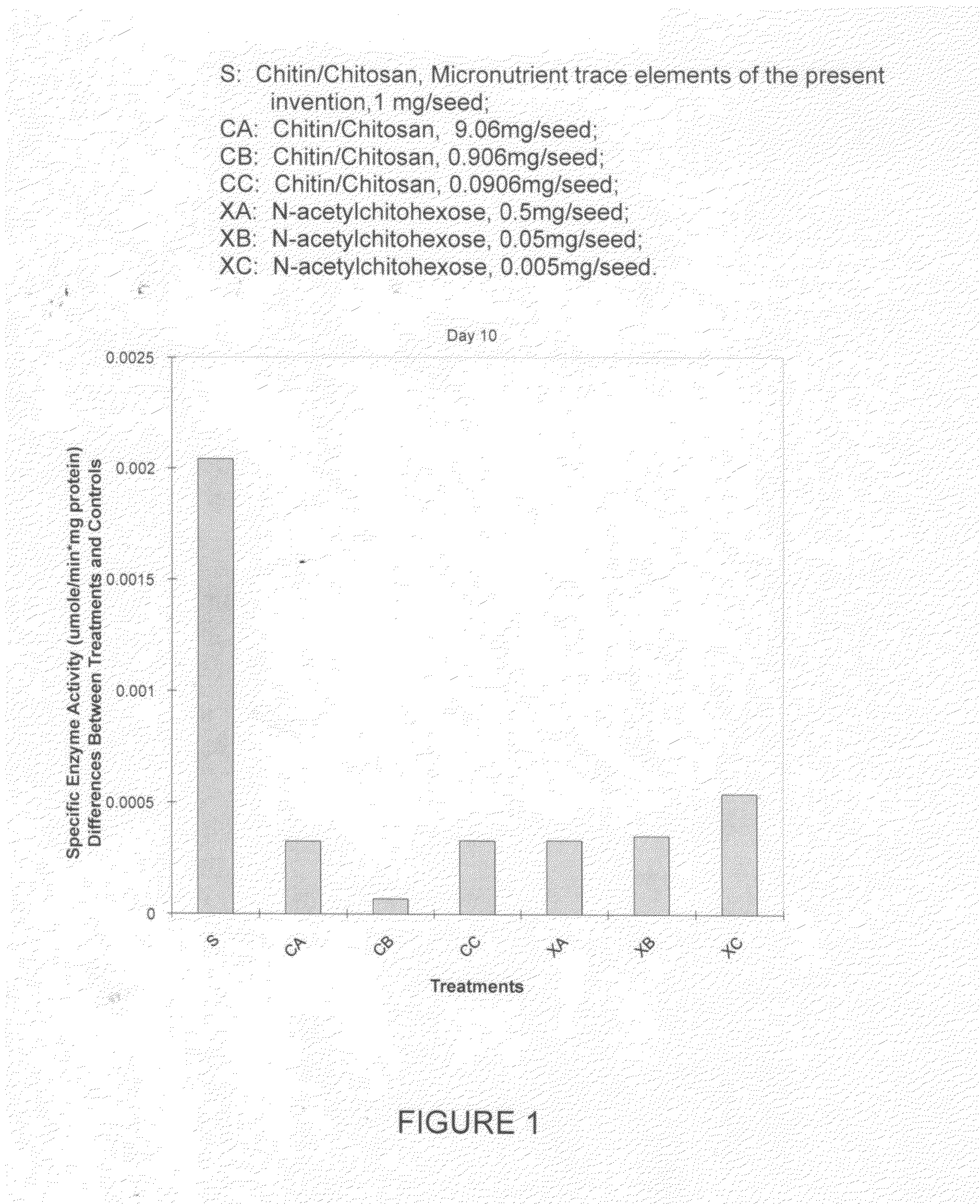Agricultural Homeopathic Elements for Biocontrol
a technology of agricultural homeopathy and organic components, applied in the field of agricultural homeopathy, can solve the problems of not being able not being able to completely eliminate the spread of disease, and not being able to solve the problem of not being able to achieve the effect of wide commercial acceptan
- Summary
- Abstract
- Description
- Claims
- Application Information
AI Technical Summary
Benefits of technology
Problems solved by technology
Method used
Image
Examples
Embodiment Construction
[0049]The chitin and chitosan and micronutrient trace elements of the present invention is an all-natural plant amendment derived from chitin and chitosan and is 100% water soluble, whereas chitin and chitosan is not water soluble. Chitin and chitosan occurs naturally in a range from 100% chitin to 100% chitosan as a mixed polymer. By contrast, an NMR analysis of the chitin and chitosan and micronutrient trace elements of the present invention revealed characteristics of approximately 20% chitin and approximately 80% chitosan. Below are data showing that the chitin and chitosan and micronutrient trace elements of the present invention outperforms chitin and chitosan as an elicitor of self-protecting enzymes.
[0050]One of the classical responses to elicitation of plants is induction of certain enzyme activities. These may[0051]1. Enhance seed germination by increasing enzymes for degradation of polymers in the seed,[0052]2. Promote and elevate seedling vigor to boost stand quality and...
PUM
 Login to View More
Login to View More Abstract
Description
Claims
Application Information
 Login to View More
Login to View More - R&D
- Intellectual Property
- Life Sciences
- Materials
- Tech Scout
- Unparalleled Data Quality
- Higher Quality Content
- 60% Fewer Hallucinations
Browse by: Latest US Patents, China's latest patents, Technical Efficacy Thesaurus, Application Domain, Technology Topic, Popular Technical Reports.
© 2025 PatSnap. All rights reserved.Legal|Privacy policy|Modern Slavery Act Transparency Statement|Sitemap|About US| Contact US: help@patsnap.com



